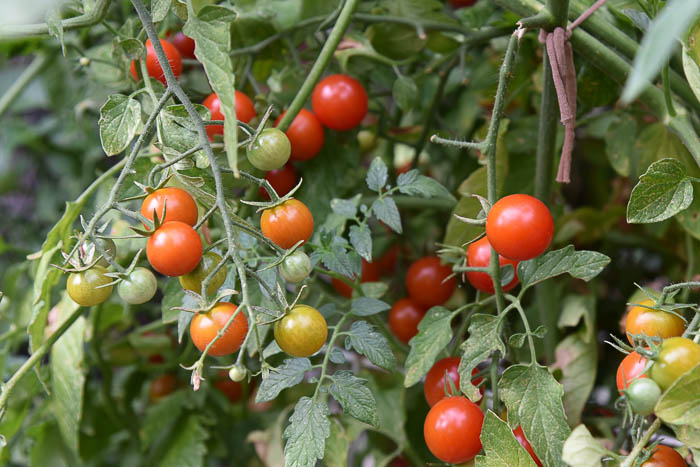What Plants Don't Like Epsom Salt? A Comprehensive Guide
Explore Why Some Plants Reject Epsom Salt as a Nutrient Source
In the elaborate world of plant nourishment, the being rejected of Epsom salt as a viable nutrient source by some plants poses a fascinating quandary. Despite its abundant magnesium and sulfur content, specific plant varieties appear to avoid this readily available substance. The reasons behind this careful actions explore a complicated interaction of plant absorption mechanisms, the special chemical framework of Epsom salt, and plant-specific nutrient choices. Recognizing these factors might clarify the enigmas of why some plants pull out of utilizing this apparently valuable nutrient source.
Plant Absorption Mechanisms
In delving into the intricate realm of plant absorption devices, it becomes apparent that the process is controlled by an innovative interplay of molecular pathways and physiological dynamics. Plants take in nutrients mostly through their origins, utilizing numerous transportation systems to uptake vital components such as nitrogen, phosphorus, magnesium, and potassium. Magnesium, an essential component in chlorophyll synthesis and enzyme activation, plays a vital duty in plant development and growth.
The absorption of magnesium involves numerous actions, starting with its availability in the soil service. Once liquified, magnesium ions are taken up by plant roots via certain transportation proteins embedded in the cell membranes. These proteins facilitate the activity of magnesium across the root cell wall surfaces and right into the plant's vascular system, where it is then dispersed to different cells to support numerous physical functions.
Comprehending the elaborate devices behind magnesium absorption in plants drops light on how this important nutrient adds to total plant health and performance. By maximizing magnesium uptake paths, growers can enhance plant returns and high quality, underscoring the significance of comprehending plant absorption characteristics for sustainable agriculture practices.
Epsom Salt Chemical Framework
The chemical structure of Epsom salt, additionally understood as magnesium sulfate heptahydrate, reveals a distinct plan of aspects that add to its special residential properties and applications - what plants don't like epsom salt. Epsom salt is made up of magnesium (Mg), sulfur (S), oxygen (O), and hydrogen (H) atoms. The formula MgSO4 · 7H2O indicates that each particle includes one magnesium atom, one sulfur atom, 4 oxygen atoms, and 14 hydrogen atoms. The presence of water molecules in its framework contributes to its solubility in water. The 7 water molecules are loosely bound to the magnesium sulfate substance, allowing it to liquify easily in water and be easily occupied by plants through their origins.
The crystal structure of Epsom salt develops monoclinic prisms, which are elongated crystals with parallel ends. This crystal shape influences the physical residential properties of Epsom salt, such as its website link appearance and solubility. Understanding the chemical structure of Epsom salt is important for comprehending its behavior blog here as a nutrient source and its interactions with plants in agricultural and gardening methods.
Plant-Specific Nutrient Preferences
Plants display distinct choices for details nutrients, stressing the importance of comprehending their individual requirements for optimum development and growth. Understanding these plant-specific nutrient preferences is essential for making the most of crop returns, boosting decorative plant growth, and promoting overall plant health.

Plant-specific nutrient choices can additionally vary based on whether the plant is a monocot or dicot. By tailoring nutrient supplementation to fulfill the specific demands of each plant types, growers can maximize plant development, decrease vitamins and mineral waste, and support lasting farming methods.

Dirt Ph and Nutrient Uptake
Dirt pH plays a critical duty in determining the availability of vital nutrients for plant uptake. Acidic dirts with a lower pH are desirable for plants like blueberries and azaleas, while alkaline soils with a greater pH match plants such as lavenders and clematis.
Soil pH affects the chemical kinds of nutrients in the soil. In acidic soils, nutrients like iron, manganese, and light weight aluminum can come to be a lot more readily available, but extreme acidity can cause toxicity concerns. On the other hand, alkaline soils might restrict the schedule of nutrients like copper, zinc, click here now and iron, influencing plant development. Maintaining the suitable pH degree in the dirt is vital for making certain that plants can successfully uptake the necessary nutrients for their healthy and balanced growth and efficiency.
Genetic Variables in Nutrient Uptake
In the world of plant nourishment, the interplay of genetic factors dramatically affects the uptake of vital nutrients essential for plant growth and development. Hereditary variables play a critical function in forming a plant's ability to absorb and make use of nutrients efficiently.
In addition, genetic factors additionally figure out the performance of nutrient uptake systems within plants. Some plants might possess genetic characteristics that enhance their capability to scavenge nutrients from the dirt successfully, providing them an affordable benefit in nutrient-poor environments. On the various other hand, genetic variants can also lead to limitations in nutrient uptake, making sure plants extra prone to deficiencies even when nutrients are plentiful in the soil.
Understanding just how genetic variables influence nutrient uptake is vital for developing methods to optimize plant nourishment and boost plant performance in different agricultural setups. By unraveling the hereditary devices included in nutrient uptake, researchers can function in the direction of developing genetically enhanced plant varieties with enhanced vitamins and mineral acquisition capabilities.
Final Thought

In the intricate world of plant nourishment, the denial of Epsom salt as a feasible nutrient source by some plants presents an intriguing problem. what plants don't like epsom salt. Recognizing these plant-specific nutrient preferences is crucial for making the most of plant yields, enhancing ornamental plant growth, and advertising general plant wellness
By tailoring nutrient supplements to meet the accurate requirements of each plant varieties, cultivators can enhance plant development, minimize nutrition waste, and support sustainable agricultural methods.
In the realm of plant nourishment, the interplay of genetic elements significantly affects the uptake of crucial nutrients essential for plant development and advancement. Understanding these complexities in plant nutrient uptake is crucial for maximizing plant growth and wellness in farming techniques.